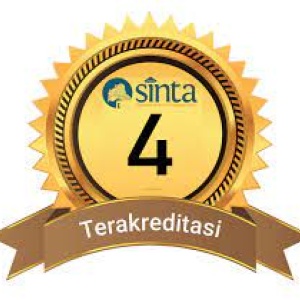Nubdzah fi Radd Ahl Al-Tariqah fi Singapura oleh Salim Ibn Sumair: Sebuah Komentar Terhadap Penganut Tarekat di Nusantara Abad 19
DOI:
https://doi.org/10.37014/jumantara.v13i2.3191Keywords:
Archipelago Manuscript, Salim ibn Sumair, Tarekat Naqshabandiyah, Sayyid bin UthmanAbstract
The history of Islam in the archipelago, especially since the early 17th to 19th centuries, has produced a number of religious texts that are quite large, including various kinds of texts from several Islamic disciplines. Now these manuscripts can be used as primary sources for writing the intellectual and social history of Islam in the archipelago. Among the several topics from these manuscripts are those relating to criticism of the tarekat teachings in the archipelago, especially in the bidding of the tarekat without paying attention to the conditions for following the tarekat. One of them is basic understanding such as the science of monotheism and Islamic law. This article aims to explain the dynamics of tarekat sufism in the archipelago from the 17th to the early 19th centuries, and what are the reasons for the criticisms carried out by interpreters of Islam in parts of the archipelago. The primary object of this article is the manuscript Nubdhah fi Radd Ahl al-Tarikat fi Singapura, which is a religious work devoted to straightening sufi teachers and tarekah adherents who recruit their congregations without considering the conditions that have been quoted by sufi scholars. In analyzing the manuscript, this article uses the Paratex Gerade Genete theory by looking for the elements that accompany the text, both those contained in the manuscript or outside the manuscript.References
Al-Hadrami, Salim ibn Sumair. Matan Safinatun Najah. Beirut: Dar al-Manhajj. 2009.
Azra, Azyumardi. "Hadhrâmî Scholars in the Malay-Indonesian Diaspora: A Preliminary Study of Sayyid ’Uthmân.” Studia Islamika 2, no. 2 (1995): 1-33. https://doi.org/10.15408/sdi.v2i2.833.
Badrulzaman, Ade Iqbal, dan Ade Kosasih. "Teori Filologi dan Penerapannya Masalah Naskah-Teks dalam Filologi." Jumantara: Jurnal Manuskrip Nusantara 9, no. 2 (2019): 1. https://doi.org/10.37014/jumantara.v9i2.241.
Bruinessen, Martin Van. "Sufi 'Orders' in Southeast Asia: from Private Devotions to Social Network and Corporate Action." Buddhist and Islamic Orders in Southern Asia 10 (2019): 126. https://doi.org/10.1515/9780824877200-007.
Bruinessen, Martin Van. Tarekat Naqsabandiyah di Indonesia: Survei Historis, Geografis dan Sosiologis. Bandung: Mizan. 1992.
Faisal, Muhammad. Tarekat Naqsabandiyah di Kepulauan Melayu. Bintan: Stain Sar Press. 2019.
Fathurahman, Oman. Ithaf Al-Dhaki: Tafsir Wahdatul Wujud bagi Muslim Nusantara. Jakarta: Mizan. 2012.
Fathurahman, Oman. "Ithaf Al-Dhaki by Ibrahim Al-Kurani: A Commentary of Wahdat Al-Wujud for Jawi Audiences. " Archipel 81 (2011): 179.
Fathurahman, Oman. "Sejarah Pengkafiran dan Marginalisasi paham Keagamaan di Melayu dan Jawa." Journal Analisis XI (2011): 447-74.
Genette, Gerard. Paratexts: Thresholds of Interpretation, Trans. Lewin, J. Literature, Culture. USA: Cambridge University Press. 1997.
Hamdiyati, Siti Raudhatul, Pramono, dan Khairil Anwar. "The Paratextual Analysis of Majmu' Al-Masa'il Manuscript of Aceh: A Study of Philology. " Polingua Sceintific Journal of Linguistics, Literature and Language Education 10 (2021).
Hayaze', Nabiel A. Karim. Hikayat Kapitein Arab di Nusantara Jejak Dakwah dan Nasionalisme. Jakarta: Garudhawaca. 2021.
Johns, Anthony H. "Sufism in Southeast Asia: Reflections and Reconsiderations." Journal of Southeast Asian Studies 26, no. 1 (1995): 169-83. https://doi.org/10.1017/S0022463400010560.
Laffan, Michael. The Makings of Indonesian Islam: Orientalism and the Narration of a Sufi Past. United Kingdom: Princeton University Press. 2011.
Levtzion, Nehemia. "Eighteenth Century Sufi Brotherhoods Structural, Organisational, and Ritual Changes." In Islam : Essays on Scripture, Thought and Society, 11:157-59. Brill. 1997.
Maulani, Abdullah. "Azimat, Obat, dan Legitimasi Kuasa: Kajian Parateks Naskah Islam Sulawesi Tenggara dan Jawa Barat." Jurnal SMART (Studi Masyarakat, Religi, Dan Tradisi) 8, no. 1 (2022): 31-48. https://doi.org/10.18784/smart.v8i1.1576.
Noupal, Muhammad. "Kontroversi tentang Sayyid Utsman bin Yahya sebagai Penasehat Snouck Hurgronje." In Annual International Conference On Islamic Studies, 1370-91. 2018.
Pramono dan Ahmad Zahir. "Beberapa Catatan terhadap Kitab-Kitab Karya Ulama Minangkabau pada Permulaan Abad XX." Jurnal Elektronik WACANA ETNIK 4, no. 2 (October 10, 2013): 111. https://doi.org/10.25077/we.v4.i2.51.
Ricci, Ronit. "Thresholds of Interpretation on the Threshold of Change: Paratexts in Late 19th-Century Javanese Manuscripts." Journal of Islamic Manuscripts 3, no. 2 (2012). https://doi.org/10.1163/187846412X631063.
Shoheh, Muhamad. "Cerita Perbantahan Dahulu Kala: Pembelaan dan Sanggahan Tuanku Nan Garang atas Kritik Sayyid 'Uthman bin Yahya bin 'Aqil Tahun 1885." Jumantara: Jurnal Manuskrip Nusantara 4, no. 1 (2013).
Shoheh, Muhamad. "Naskah Surat Tariqah: Kritik Tuanku Nan Garang atas Sikap Anti Tarekat dan Anti Jihad Sayyid Uthman Al-Batawi." Peper Knowledge. Toward a Media History of Documents 3, no. April (2015): 49-58.
Suniah, Siti. Kritik terhadap Tarekat (Kajian terhadap Pemikiran Sayyid Usman bin Yahya). Ciputat: CintaBuku Media. 2015.
Downloads
Additional Files
Published
Issue
Section
License
Copyright (c) 2022 Jumantara: Jurnal Manuskrip Nusantara

This work is licensed under a Creative Commons Attribution-ShareAlike 4.0 International License.
- This statement is the author's commitment to respect copyright, both in terms of citing other people's work and utilizing journal content. If necessary, the author can send an Authenticity Statement of Article stating that "this work is the author's original idea and has never been sent to another publisher and published in any publication"
- The author retains copyright.
- The moral rights of publication belong to the author.
- Formal legal aspects in the use of journal publications refer to the Creative Commons Attribution-ShareAlike 4.0 (CC BY-SA) license, which means that journal content can be used freely for any purpose.









